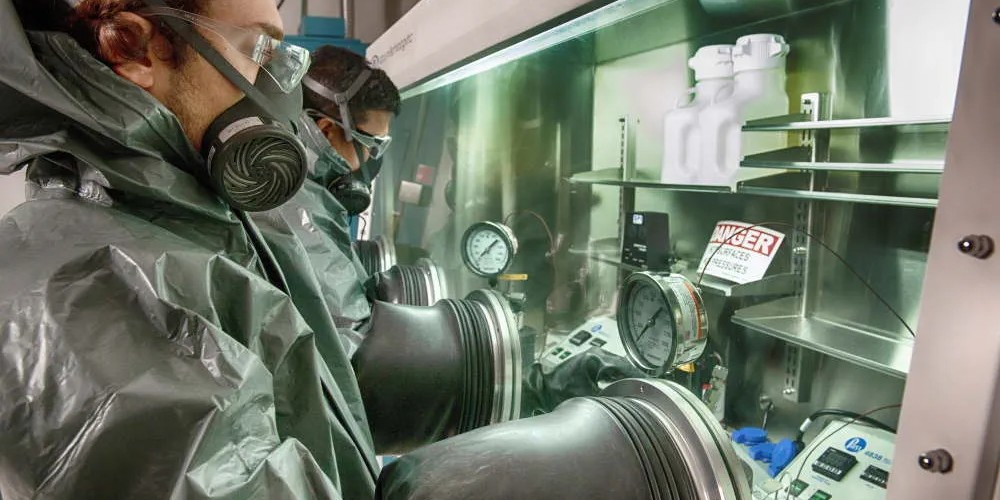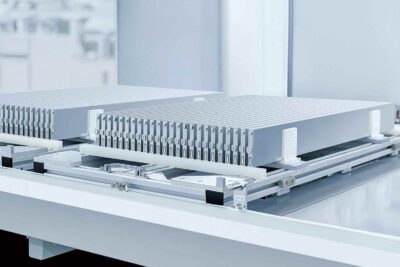FST opens exposure test lab for aggressive electrolytes
Freudenberg Sealing Technologies is expanding its testing capabilities for Li-ion batteries in the US. The company has installed a special isolation and containment chamber at its central laboratory in Plymouth, Michigan.
The chamber enables safe exposure tests on materials that come into contact with aggressive lithium electrolyte solutions. Freudenberg claims this would provide conclusive data on which materials optimally resist breakdown and that such data has not been readily available in the private sector until now. Director R&D for Freudenberg Sealing Technologies in the Americas, F. Joseph Walker, added that “Previous effort has been conducted to determine the impact of materials on the electrolyte. This work focuses on the impact the electrolyte has on the materials.”
Electrolytes are being advanced as you read. These solvents can result in a faster exchange of lithium ions between the anode and cathode sides of a battery cell, thus ultimately impacting energy discharge ad recharge rates, Freudenberg informs. The company emphasises that these new solvents also expose seals, gaskets and other battery components to a constant mix of reactive, flammable, caustic and hazardous chemicals, so the testing is to predict or prevent erosion.
According to the company, the Isolation and Containment Chamber (IsoC) allows technicians to safely conduct exposure testing using the “very aggressive” lithium electrolytic solutions found in lithium-ion battery cells. Safety is a must as these solutions are volatile, toxic and flammable when exposed to the air. The IsoC, measuring hardly 2 sqm (6 x 3 x 3 feet), is made from glass and steel and a controlled, inert and moisture-free environment, Freudenberg says.
The dual chambers of the IsoC allow the team to install test samples in the first chamber, purge all air, oxygen and moisture from that space and then move them to the second, larger IsoC chamber for exposure testing. Materials will be immersed in the electrolytic solution for at least 1,000 hours, then decontaminated to ensure they are safe for removal from the IsoC, explains FST. They will then be subjected to the company’s standard physical and analytical test methodologies.
Further safety measures include what FST calls a “sophisticated telemetry control system that facilitates remote IsoC monitoring.” The company also lists head-to-toe protective gear and special respirators for chemists, non-reactive, nickel-based immersion vessels, a safety monitoring and alarm system expensive electrolytic solutions.
For the latter, Freudenberg says it will use two electrolytic solutions in its immersion testing, commonly used in lithium-ion battery cells and one that has been manufactured as a control. The company will test families of materials, beginning with its own unique and proprietary materials and then test commercially available materials used in these batteries as a benchmarking effort.
“Benchmarking will provide us with the ability to spot gaps in compatibility and performance,” Walker said. “Then, we can develop material programs and components to fill those gaps.”
The findings are to be reflected in future products. Speaking of which, Freudenberg has also been involved in the fuel cell sector for some time, most recently in the StasHH consortium. The aim is to draw up the first European standard for fuel cell modules for heavy-duty applications. Six months ago, the company also announced cooperation with Quantron AG to tackle the development of a fuel cell system for trucks in the 40-ton weight class.
For its own investment in the new IsoC testing chamber for lithium-battery materials, Freudenberg only speaks of a six-figure investment without going into detail.





0 Comments